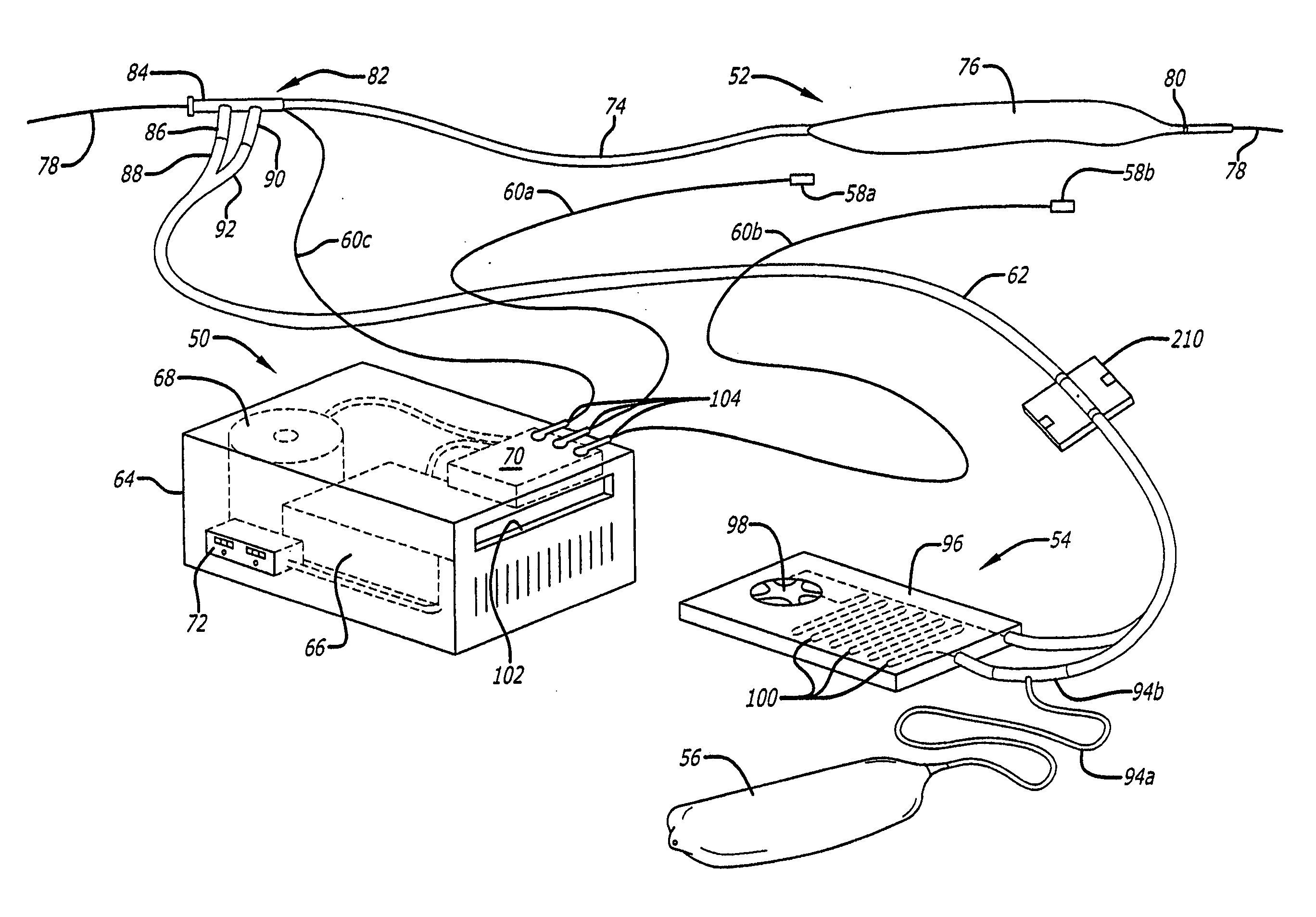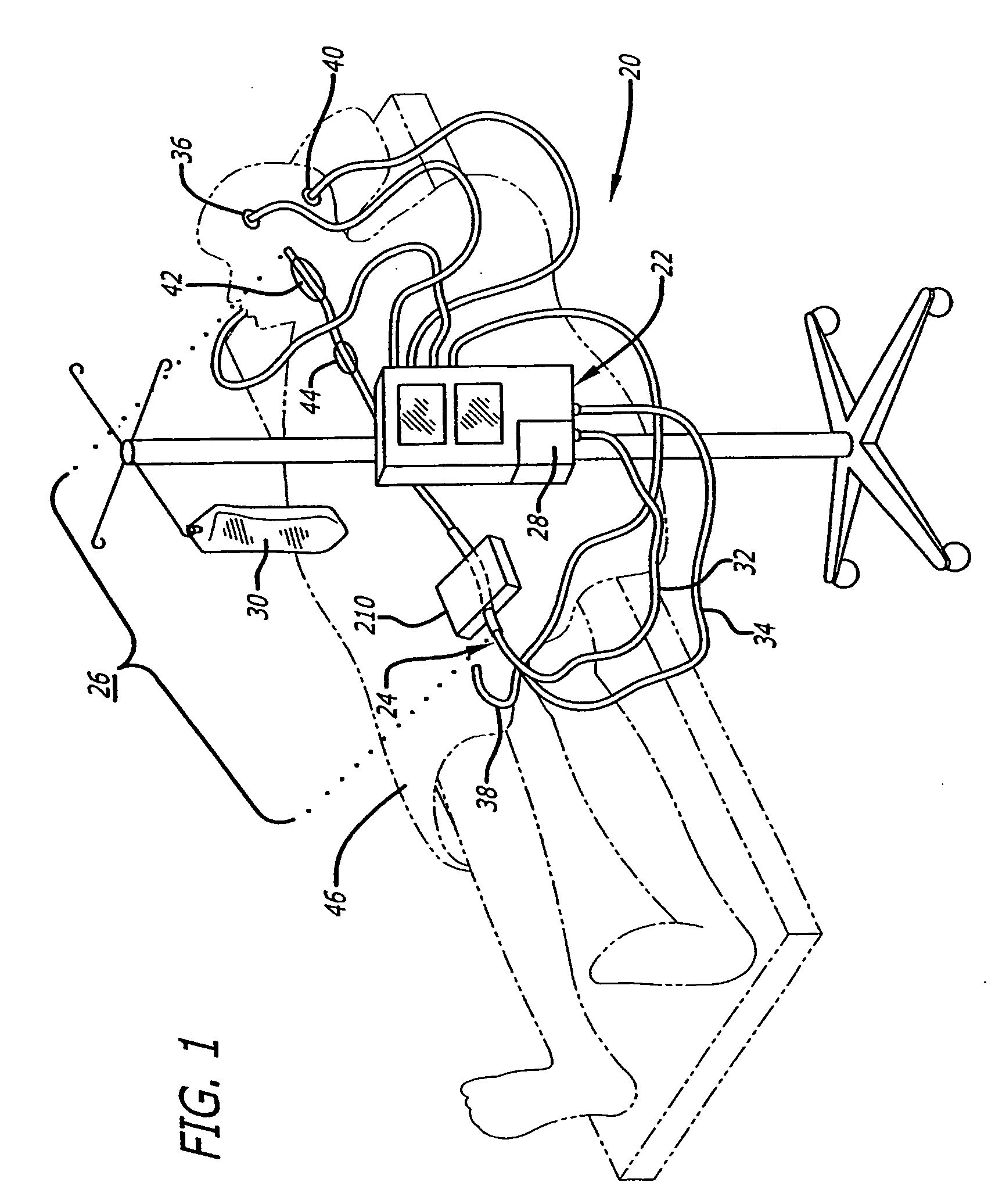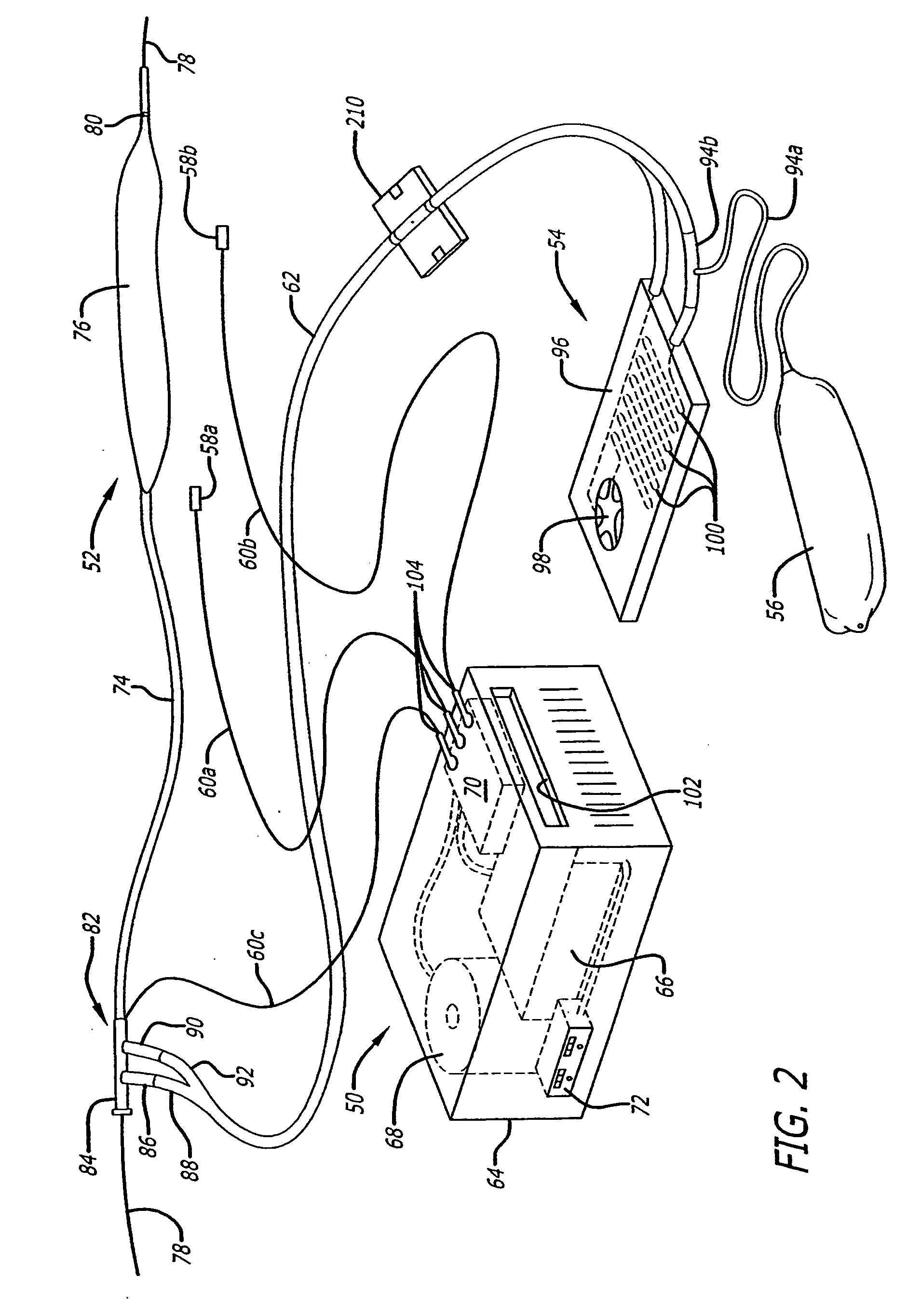Accidental
hypothermia is generally a dangerous condition that may even be life threatening, and requires treatment.
If severe, for example where the body temperature drops below 30° C.,
hypothermia may have serious consequences such as cardiac arrhythmias, inability of the blood to clot normally, or interference with normal
metabolism.
If the period of hypothermia is extensive, the patient may even experience impaired immune response and increased incidence of infection.
Administering warm fluids by mouth relies on the patient's ability to swallow, and is limited in the temperature of the liquid consumed and the amount of fluid that may be administered in a limited period of time.
Heat applied to the patient's
skin, however, has to transmit through the
skin by conduction or
radiation which may be slow and inefficient, and the
blood flow to the
skin may be
shut down by the body's thermoregulatory response, and thus, even if the skin is warmed, such mechanisms may be ineffective in providing heat to the core of the patient's body.
This provides heat relatively fast to the patient, but the amount of heat that can be administered without injuring the patient's lungs is very limited.
An alternative method of warming a hypothermic patient involves infusing a hot liquid into the patient via an
IV infusion, but this is limited by the amount of liquid that can be infused and the temperature of the liquid.
In extreme situations, a very invasive method may be employed to control hypothermia.
Such extreme measures have obvious advantages as to effectiveness, but also obvious drawbacks as to invasiveness.
The pumping of blood through an
external circuit that treats the blood is generally quite damaging to the blood, and the procedure is only possible in a
hospital setting with highly trained personnel operating the equipment.
Like hypothermia, accidental
hyperthermia is a serious condition that may sometimes be fatal.
In particular,
hyperthermia has been found to be neurodestructive, both in itself or in conjunction with other
health problems such as
traumatic brain injury or
stroke, where a body temperature in excess of normal has been shown to result in dramatically worse outcomes, even death.
These, however, are subject to the limitations and complications as described above in connection with hypothermia.
For example, periods of cardiac arrest or cardiac insufficiency in heart
surgery result in insufficient blood to the brain and
spinal cord, and thus can produce
brain damage or other nerve damage.
However, such
cooling methods are extremely cumbersome, and generally ineffective to cool the body's core.
There is also an inability to precisely control the temperature of the patient by this method.
Generally, however, this is only available in the most extreme situations involving a full
surgical team and full surgical suite, and importantly, is only available for a short period of time because of the damage to the blood caused by pumping.
However, it is this very
external manipulation of large amounts of the patient's blood that makes long term use of this procedure very undesirable.
A patient's core body temperature can fluctuate unpredictably with the
insertion of various medical devices within the patient's body during a
medical procedure that can
skew the reading of the body temperature when taken in the immediate area of the lumen where the
medical device is inserted.
Such a bias may result in undershooting the target temperature when the biased temperature readings are used to control heating or cooling of the blood of the patient.
While the esophageal temperature obtained is typically a reasonably accurate measurement of the patient's
core temperature, inaccuracies may occur due to improper placement of the probe.
Further, placement of the esophageal temperature probe is
time consuming, requires precision in placing the probe in the proper area of the
esophagus, and also may interfere with other tubes or catheters that may need to be inserted either through the patient's mouth or
nasal passage.
A principle
disadvantage of this method is that each time the flow is stopped, the maximum heating or
cooling rate is decreased.
Moreover, if the interval before the first stoppage is lengthened to speed heating or cooling, the method provides
increased risk of overcooling or overheating unless the pump is stopped and the patient's temperature is confirmed.
Additionally, when using algorithms to project the actual
blood temperature, the fluid flow may never be stopped long enough for the heat exchange fluid to equilibrate with the actual
blood temperature, thus providing only an estimate, and not an actual measurement, of the blood temperature.
Such arrangements, however, typically provide fluctuating temperature signals to the controller, which may adversely affect the controller's ability to accurately determine the temperature of the patient's blood.
 Login to View More
Login to View More  Login to View More
Login to View More 


